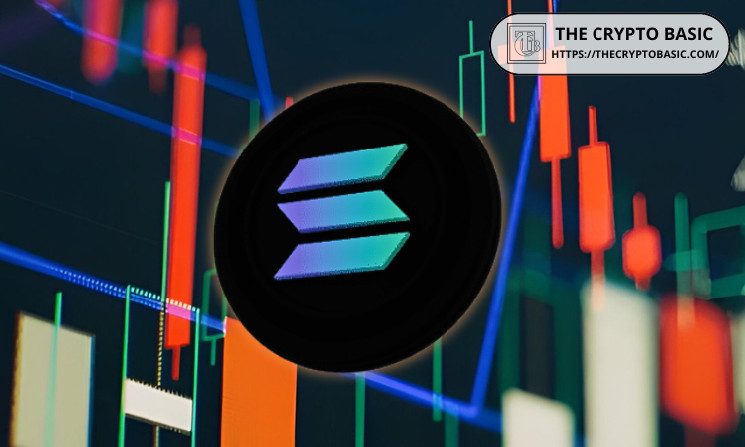Solana’s Price Struggles: An Overview of the Current Market Sentiment
Solana (SOL) has recently found itself at the center of attention in the cryptocurrency market as its price revisits the $160 level, a point that has historically been a critical price range for the token. However, the current market sentiment surrounding SOL is increasingly bearish, with many analysts and traders warning of a potential massive crash in the near future. The growing supply pressure on the token has been cited as one of the primary factors contributing to this bearish outlook. As the price continues to hover around this key level, questions are being raised about whether Solana’s price could plummet further, potentially reaching as low as $106. This scenario has sparked a wave of concern among investors, who are now closely monitoring the token’s performance and the broader market trends that could influence its trajectory.
Technical Analysis: Understanding the Bearish Momentum
Technical analysis of Solana’s price action reveals a concerning trend that has led many experts to sound the alarm. The token has recently hit a 3-month low, a stark contrast to its performance earlier in the year when it showed significant strength and resilience. This downward trend has been exacerbated by the increasing supply of SOL in the market, which has put additional pressure on its price. One of the key indicators that has caught the attention of analysts is the token’s moving averages, with the 50-day and 200-day moving averages signaling a potential crossover—often a precursor to a prolonged bearish trend. Furthermore, the Relative Strength Index (RSI) has dipped significantly, indicating that SOL is oversold and may be due for a correction. However, the continued downward pressure has many wondering if a rebound is on the horizon or if the token is set to face further declines.
Market Sentiment and the Role of Supply Pressure
The bearish sentiment surrounding Solana is not just limited to technical indicators; it is also being driven by fundamental factors, particularly the increasing supply of SOL in the market. As more tokens become available for trading and investment, the demand for SOL has not kept pace, leading to a supply-demand imbalance that has pushed prices downward. This supply pressure has been further exacerbated by the broader market conditions, which have seen a sentiment shift away from riskier assets in recent weeks. The cryptocurrency market as a whole has been under significant pressure, with major cryptocurrencies such as Bitcoin and Ethereum also experiencing declines. This broader market downturn has had a ripple effect on Solana, which has historically been more volatile than its larger counterparts.
The Role of On-Chain Metrics and Network Activity
Beyond the technical and market sentiment factors, on-chain metrics and network activity have also played a significant role in shaping the bearish narrative around Solana. While SOL has been praised for its high-speed transactions and low fees, recent data has shown a decline in network activity, which could be a concerning sign for long-term holders. The number of active addresses and transaction volumes on the Solana network have both seen a decline in recent weeks, suggesting a potential decrease in user engagement and interest in the ecosystem. This decline in activity has led some to question whether Solana’s fundamentals are strong enough to support its current price levels, especially in the face of increasing competition from other high-performance blockchain platforms.
Comparing Solana to Other Cryptocurrencies
When analyzing Solana’s current situation, it is often helpful to draw comparisons with other cryptocurrencies that have faced similar challenges. For instance, tokens such as Cardano (ADA) and Ripple (XRP) have also experienced significant price declines in recent months, driven by a combination of technical and fundamental factors. However, Solana’s situation is unique in that it is still considered one of the younger and more promising blockchain platforms, with a strong developer community and a growing ecosystem of decentralized applications (dApps). Despite this, the current market environment has proven challenging for even the most established cryptocurrencies, and Solana has not been immune to these pressures. The token’s ability to navigate this challenging environment will likely depend on its ability to continue innovating and attracting new users to its network.
Will Solana’s Price Crash to $106?
The question on everyone’s mind is whether Solana’s price will indeed crash to $106, a level that many analysts have identified as a critical support zone for the token. If the price continues to struggle under the weight of bearish sentiment and supply pressure, it is certainly possible that SOL could test this lower level. However, it is also important to consider the potential for a rebound, especially if the broader market conditions begin to improve. Solana has shown resilience in the past, and its developer community remains active and committed to the project’s success. While the short-term outlook may appear uncertain, the long-term prospects for Solana remain positive, as the platform continues to innovate and expand its offerings. For now, investors would be wise to keep a close eye on market trends and be prepared for further volatility in the coming weeks.
Conclusion: Navigating the Uncertain Landscape
In conclusion, Solana’s current market situation is a complex and multifaceted issue that involves a combination of technical, fundamental, and broader market factors. While the bearish sentiment and supply pressure pose significant challenges, it is important to keep things in perspective. The cryptocurrency market has always been known for its volatility, and even in the face of significant declines, there is often the potential for a rebound. For investors, the key is to remain informed, diversify their portfolios, and make decisions based on a thorough analysis of the available data. Whether Solana’s price will indeed crash to $106 remains to be seen, but one thing is certain—the coming weeks will be pivotal in determining the token’s near-term trajectory.















